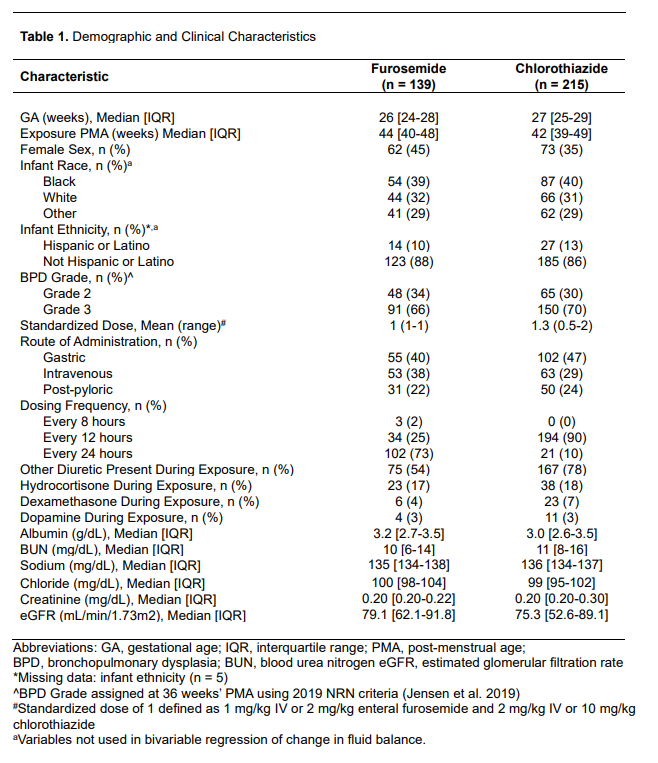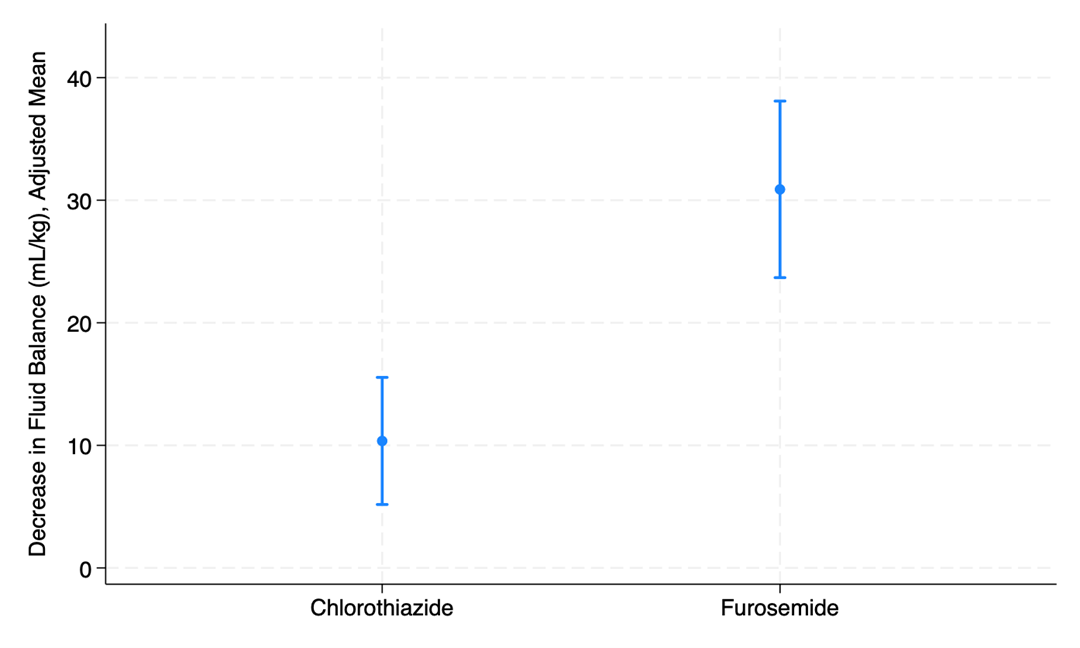Neonatology
Session: Neonatal Nephrology/AKI 2
48 - Chlorothiazide is associated with weaker diuretic response than furosemide in infants with severe bronchopulmonary dysplasia (BPD)
Sunday, May 5, 2024
3:30 PM - 6:00 PM ET
Poster Number: 48
Publication Number: 48.1790
Publication Number: 48.1790

Timothy Nelin, MD (he/him/his)
Fellow, Neonatal-Perinatal Medicine
Childrens Hospital of Philadelphia
Philadelphia, Pennsylvania, United States
Presenting Author(s)
Background: Among infants with BPD, exposures to furosemide and chlorothiazide are common. Their comparative diuretic effect is unknown.
Objective: To compare diuresis after novel furosemide vs chlorothiazide exposure in preterm infants with grade 2 or 3 BPD.
Design/Methods: This cohort study evaluated diuresis after novel exposure to furosemide or chlorothiazide between 36-60 weeks postmenstrual age (PMA) among infants with grade 2 or 3 BPD admitted to single center level IV NICU between 2010-21. Novel exposure was defined as at least 1 day of furosemide or chlorothiazide exposure in infants without respective exposure in the preceding 7 days (i.e. infants with a novel furosemide exposure may have chlorothiazide use in the preceding 7 days, but not furosemide). Infants could contribute to both novel furosemide and chlorothiazide exposures. We standardized enteral and intravenous doses assuming an enteral bioavailability of 50% for furosemide and 20% for chlorothiazide. We measured within-subject change in net fluid balance (mL/kg) in the 24 hours before and after diuretic initiation as a surrogate of diuretic effect. The comparative effect of furosemide and chlorothiazide on diuresis was evaluated through multivariable linear regression using clustered robust variance estimates to account for repeated observations within subjects. We adjusted for potential confounding by including diuretic dose, frequency, and route a priori and candidate covariates associated with diuresis at P < 0.1 in bivariable regression.
Results: 302 eligible infants contributed 215 chlorothiazide and 139 furosemide exposures (Table 1). Table 2 displays the bivariable association between candidate covariates and diuretic effect; only BUN (p = 0.038) met criteria for inclusion in adjusted models. Furosemide was associated with a 3-fold greater diuretic effect than chlorothiazide in multivariable modeling (adjusted mean, mL/kg: -30.9 vs -10.4, p < 0.001) (Figure 1). We also found that dosing every 12-hours compared to every 24-hours was associated with a greater diuretic effect (adjusted mean, mL/kg: -22.3 vs -11.1, p = 0.029). No significant differences in diuretic effect were noted for route of administration or diuretic dose in multivariable analysis.
Conclusion(s): Chlorothiazide is associated with a weaker diuretic effect in the day after novel exposure compared to furosemide among infants with grade 2 or 3 BPD. Clinicians should take this into consideration when evaluating the risks and benefits of common diuretic regimens.


.png)
